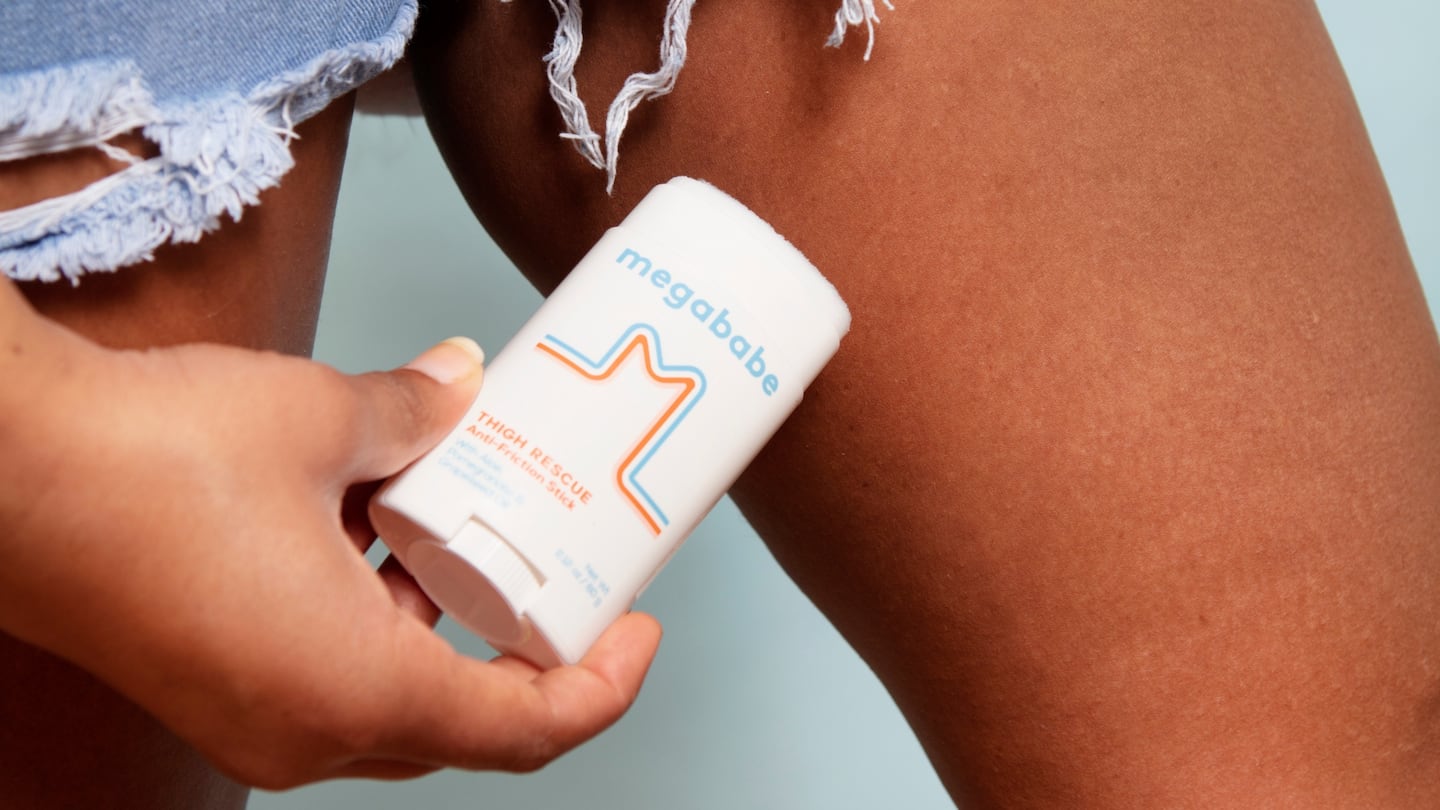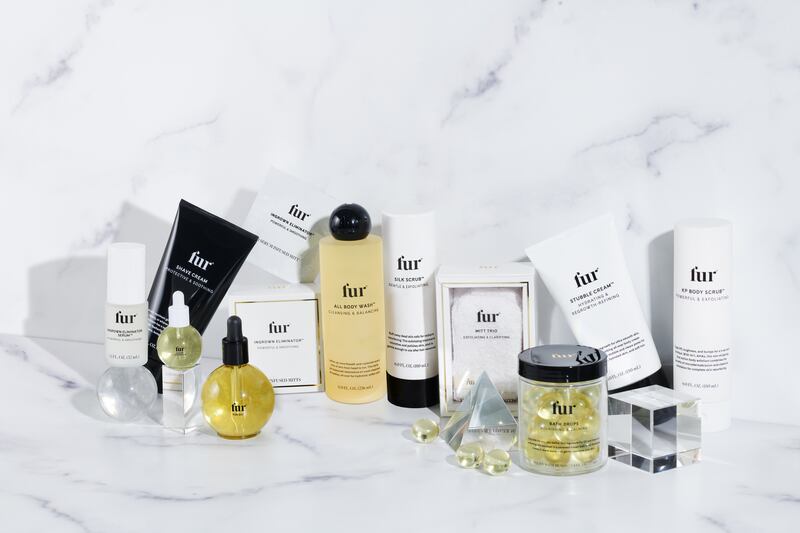
The Business of Fashion
Agenda-setting intelligence, analysis and advice for the global fashion community.

Agenda-setting intelligence, analysis and advice for the global fashion community.

Beauty products often exist to hide, heal or erase blemishes. But there are certain conditions — from thigh chafing to body acne to yeast infections — that many top brands have long ignored.
“We used to buy these things in a Target or a CVS and they were ugly, but it didn’t matter,” said Claire McCormack, editor at Beauty Independent, noting that products that support everyday needs like hair removal items and even menstruation tools — mostly used by women — were either dominated by big, unsexy brands or ignored altogether. “Now, we want things on display that look beautiful,” she added.
But that’s changing. In recent years, a new category that sits at the cross section of beauty and personal care has emerged to address concerns rarely discussed in the past. Megababe tackles thigh chafe and cleavage sweat. Fur makes a ritual of pubic hair grooming with hair oil and a serum for ingrown hairs, packaged in sleek round bottles. There’s also Truly Beauty, a TikTok-favourite skin care brand that makes items formulated for rear-end and breast skin. And also Love Wellness, which sells supplements and vitamins for everything from UTI prevention to restoring the pH balance of a user’s vagina.
By selling direct-to-consumer and upgrading the packaging to be more approachable — and more attractive — these labels are trying to turn once-taboo products into items worthy of front-row display in a medicine cabinet. The hope is that by labelling them as beauty products instead of consumer packaged goods, they will benefit from the deeper, long-lasting relationships beauty companies often develop with shoppers, not to mention the cool factor the category carries when compared with other consumer packaged goods.
ADVERTISEMENT
“Beauty as a category has always been able to connect so strongly with consumers,” said Cristina Nunez, partner at True Beauty Ventures. “It could be anything from the branding to the imagery to the digital marketing strategies, all of them can be applied to these other categories to create the same consumer connection that beauty is able to do.”
While founders tackling these less-explored categories may have initially been motivated by the need for better, shame-free products, those reasons for existing also made it harder to attract attention.
“When we talked about what our brand was doing, tackling the taboo around pubic hair, we got the most polarised response,” said Lillian Tung, co-founder of pubic hair maintenance brand Fur. “People either thought it was a brilliant idea, or they thought it was disgusting. There was no middle ground.”
That extended to attracting attention from press, said Katie Sturino, founder of Megababe, who added that publications were often a bit confused by the brand’s premise, which started with a product that treated thigh chafe — or the red irritation that can happen between a person’s thighs if they rub directly together — and has since expanded to making “Le Tush Butt Mask,” for rear-end acne, “Bust Dust,” an “anti-boob-sweat” spray and “Happy Pits,” an under-arm mask.
“People didn’t really know how to address a beauty brand that was okay with talking about things that no one talked about,” Sturino said.
Nancy Jarecki, founder of Betty, which makes hair dye for pubic hair, said that a desire to make her product palatable to the press was what motivated her to classify it as a “beauty” product rather than in the “personal care” category.
“I thought If I create it and mark it as a beauty product, it will slip into the beauty editors’ hands and it will get into these glossies,” she said. “And my hunch was right.”
But social media has helped to remove some of the stigma around these categories. While Instagram has perhaps heightened focus on outward appearance, it’s also played a role in the rise of the body positivity movement.
ADVERTISEMENT
“This category has the empowerment aspect of talking about this thing that you shouldn’t be ashamed of and still falls under body positivity,” McCormack said. “All of that has really helped fuel the growth that this category has seen.”
The demand has prompted mainstream retailers like Target and Ulta Beauty to sell brands like Megababe and Maelys, which makes products like a “booty” mask and “breast” mask. Megababe, for example, entered Ulta Beauty stores less than a year after its 2017 launch. That was also out of necessity: The brand did not — and still has not — sought funding, and entering mainstream retail provided it with faster access to a wider consumer base. It’s been profitable since the start, Sturino said.
Smaller chains and boutiques also provided an opening into brick-and-mortar, a boon for the self-funded Fur, said co-founder Laura Schubert. “We really needed to get dollars in the door,” she said. “We couldn’t wait three years for Ulta Beauty to take us.”

For instance, the buy-in of Jessica Richards — founder of influential Brooklyn beauty retailer Shen, who often touts the brands she buys for the store on her social media — created a halo effect.
In physical retail, brands can also figure out which product category they fit into best. Love Wellness founder Lauren Bosworth said that in Target stores, the brand is housed in the natural beauty aisle instead of the vitamin aisle, as might have been expected.
“The natural beauty aisle at Target is a place where you want to spend time, that you’re not embarrassed to be, versus the tampon aisle, you run in, you grab what you need and you’re running out,” she said. “You’re willing to linger, pick up product and experience it.”
There has been investor interest in the category — Love Wellness raised a $4 million Series A in 2019 and an additional round this year. But others, like Megababe and Fur, have remained self-funded despite investor interest. The Honey Pot Company, which makes period and feminine care products, raised venture capital, but also tapped other methods, like a crowdfunding campaign on Indie GoGo, to fund its tampon launch in 2017.
Historically, the products that existed in this category came in utilitarian or even embarrassing packaging — the sort of item you’d hide in your cart in the store and then deep in the back of your closet at home. Now, the design and packaging play a leading role in helping them to stand out.
ADVERTISEMENT
Megababe, for example, uses colours like bright neons and soft pastel hues decorated with cute illustrations —its “Le Tush” product, which treats butt acne, features a drawing of a corgi’s backside. Cheeky product names, too, are frequently deployed: Megababe’s hero thigh chafe product is called “Thigh Rescue,” while Love Wellness’ “The Killer” product is meant to help prevent yeast infections.
“There’s an acceptance and an acknowledgement when you use bright colours,” said Laura Tedesco, chief strategy and marketing officer at period product maker The Honey Pot Co. “We’re not trying to hide this away in the way that we all grew up doing.”
Other brands have embraced a more upscale approach, like Fur, which sells products like its Ingrown Concentrate in sleek round bottles with elegant black-and-white branding.
“In order for people to take it seriously that we are like a real beauty brand, it has to be something that someone feels proud of, that they know was well designed, whether it’s the way it looks, the ingredient or the claims that we’re making about efficacy.”
Nunez said that as innovation in the space grows and earns more consumer attention, conglomerates will also start to pay attention, incorporating similar products into their own assortments and acquiring these brands.
However, there are still sceptics: Tung said that last year, when Fur put out an out-of-home campaign featuring wild postings of women with pubic hair, the reaction wasn’t entirely positive.
“People would stop on the street, go get art supplies, and come back and cover it up, or like graffiti the word ‘shave’ over it, and this was in the West Village of New York City,” she said. “It’s clearly still shocking to so many and there’s still such a way to go.”
A new wave of friendly, elevated and sex-positive brands peddling vibrators, lube and sex-centric supplements are attracting retailer and investor attention.
The high-growth category now includes everything from vibrators to vitamins as consumers look for more holistic solutions rather than just products.
The category is often thought to be ‘recession proof,’ but brands are making adjustments to prepare for a potential recession.

Diana Pearl is News and Features Editor at The Business of Fashion. She is based in New York and drives BoF’s marketing and media coverage.
The company reported a long-awaited lift in net sales in its third quarter results, with increases from skincare leading the way, but clouds persist over its China recovery.
As awareness grows about the perils of sleep deprivation, beauty and wellness brands are flooding the market with an array of products to cash in on the booming opportunity.
Going public is usually a pivotal moment in a company’s history, cementing its heavyweight status and setting it up for expansion. In L’Occitane’s case, delisting might be a bigger conduit for growth.
Brands say they’re barreling ahead with marketing and commerce on the app, even as the clock starts ticking for owner ByteDance to sell it or shut it down.